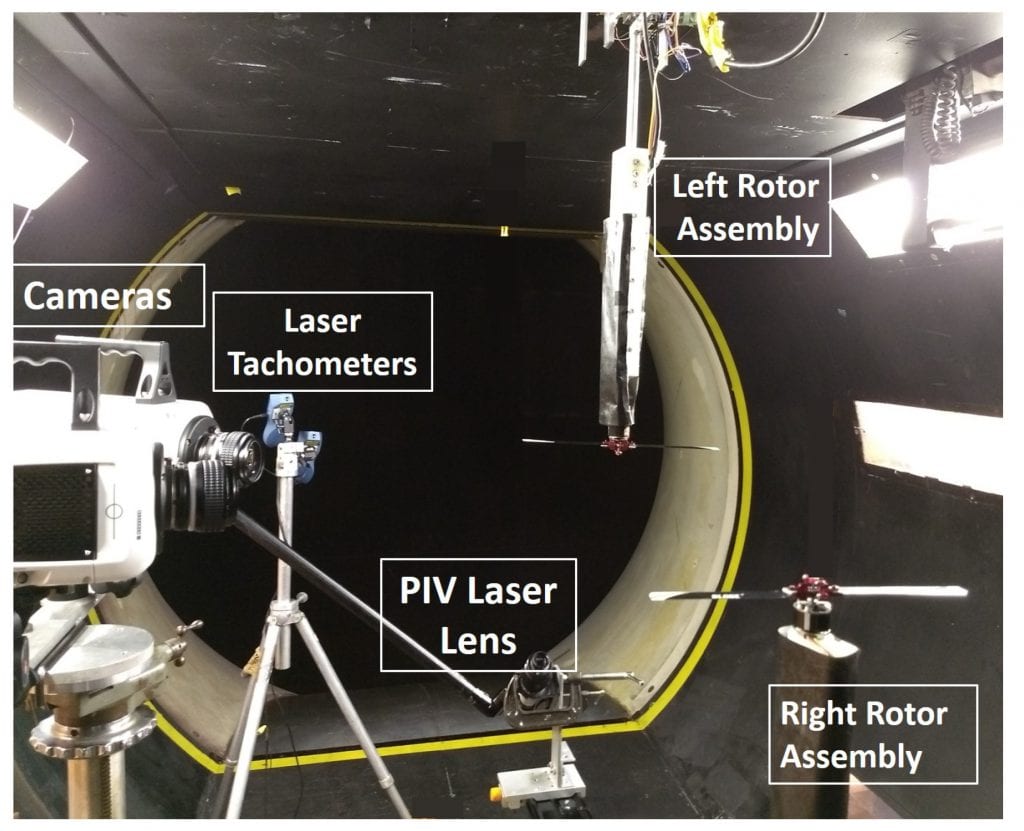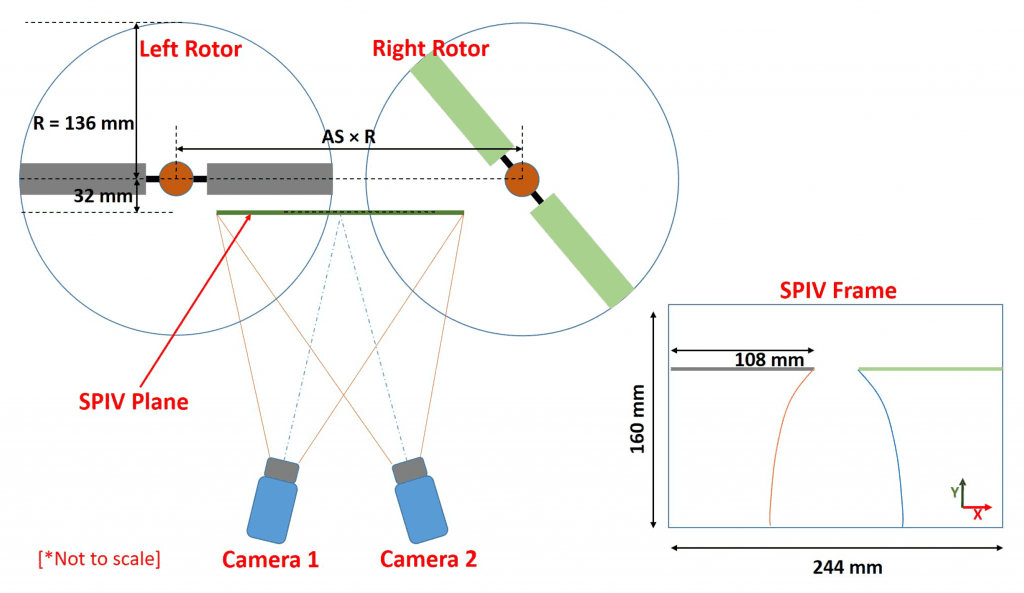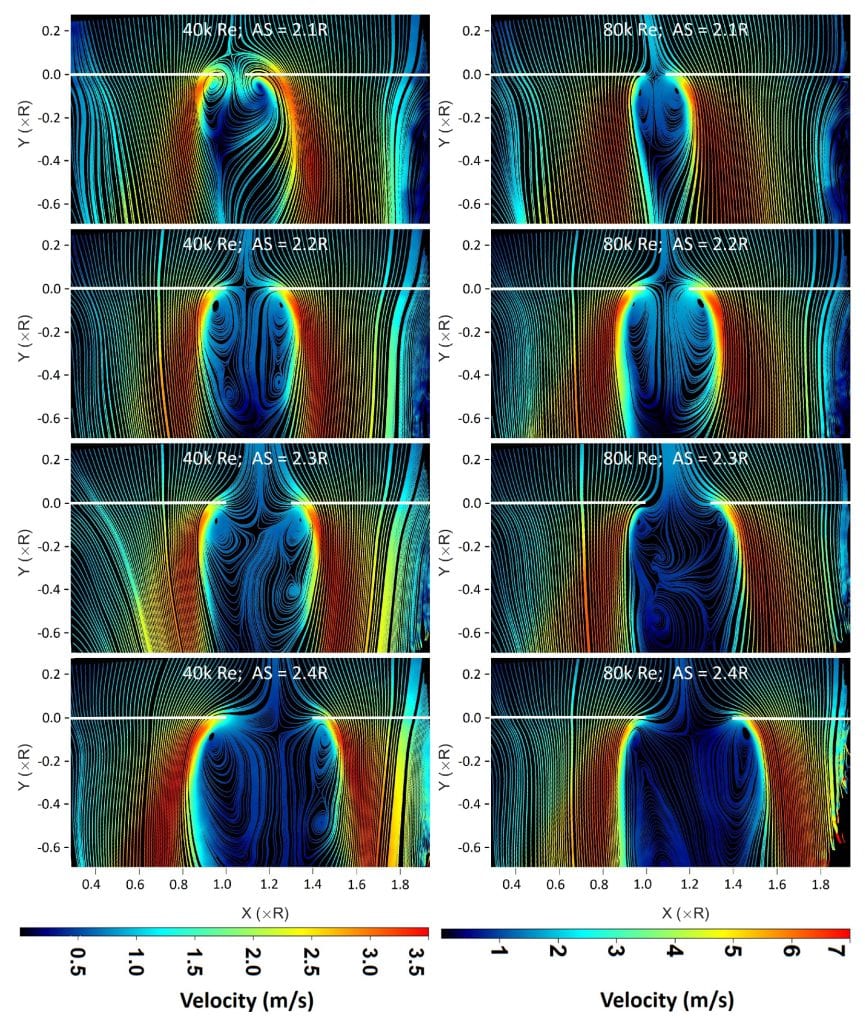
News
A Drone Aerodynamics Investigation
A Drone Aerodynamics Investigation
Aerodynamic interactions between rotors are one of the most important factors that affect the performance of in-plane multirotor UAVs or drones. Their optimal design requires knowledge of the flow features. However, the only question right now is the aerodynamic – or in other words – how these drones differ from the ones expected by traditional analytical methods for rotorcraft.
Discussing the Basic Components of In-Plane Multirotor Wake and Velocity Profiles
Dhwanil Shukla and Narayanan Komerath from the School of Aerospace Engineering, Georgia Institute of Technology, Atlanta discuss the basic components of in-plane multirotor wake and velocity profiles in order to generalize the findings to a wide range of drones.
As they state in their paper:
“The current aerodynamics knowledge in this small scale regime is limited to design and optimization of isolated rotors, with multirotor configurations being designed largely on an ad hoc basis. A good understanding of rotor-rotor and rotor-body aerodynamic interactions for multirotor UAVs is important for well-informed design optimization to push beyond the current performance limitations. Performance enhancements in endurance, range, payload and/or speed are crucial for utilizing drones in applications such as firefighting, rescue operations, EMS, organ transport, retail delivery and so on, which have potential to cause great socio-economic impact.”
The study continues the previous efforts of the authors to understand the low-Re multirotor flows. And while the prior efforts were focused on the special case of quadrotors and included flow visualization and performance measurements on small size quadrotor setups, the work in their paper is more generalized for use in any in-plane multirotor configuration.
As such, the present study includes high-speed stereo particle image velocimetry and performance measurements on setups comprising of two counter-rotating side-by-side rotors.

A photograph of the bi-rotor setup
The Materials and Methods Used
There are two main methods through which the authors evaluate and test the velocimetry and performance measurements. The first is the facility and experimental setup which “consists of two identical rotors placed side-by-side, and rotating in opposite directions.”
Each rotor assembly module in this test is instrumented with a one-kgf range load cell for thrust measurement and a 100-gm range load cell installed tangentially about the rotation axis to measure rotor torque.

SPIV measurement plane location.
The further analysis are the test and trim conditions which were performed at two separate rotor blade tip Reynolds numbers of 40k and 80k accordingly. The standard deviation of the thrust and torque measurements, on the other hand, was within 4% and 3% respectively.
From the results and performance measurements, we can see various graphs and results. In the general discussion, the authors note that the rotor tip vortices “due to the two adjacent rotors interact with each other for small axis shift values” and lose their coherent structure in about a rotor rotation – splitting into small sports of high vorticity in the region between the rotor wakes.

Average flow field streamline plots.
“With increase in axis shift, the trajectories of tip vortices tend to get more predictable and the region between rotor wakes become free of sporadic flow. Lesser wake interactions at higher axis shifts is in a way obvious and expected as velocity induced by vortices decay by a factor of square of distance outside the solid body rotation core area. The wake should in principle become like that of a single isolated rotor as axis shift tends to infinity.”
From this, the authors come up with a general conclusion and evaluate the key findings.
Final Words
In the end, true authors note that the interaction between wakes of two side-by-side rotors as a function of distance between the rotors and their Re were looked at from instantaneous as well as mean flow field perspective in the study.
“A dip in performance was observed for cases with rotors very close to each other at low Re. It was hypothesized that the interaction of rotor blades with the tip vortex cores of the neighboring rotor blades at small axis shifts could be a reason for the effect on efficiency. However, more focused tests are needed to confirm this. The instantaneous flow field measurements indicated high inter-rotor wake interactions for small axis shifts causing rotor wake features to distort, lose coherent form and deviate from their typical trajectories.”
From this, the key findings are evaluated – mainly focusing on the very close proximity of adjacent rotors and its adverse effects on rotor performance, as well as the blade-vortex interaction which was found to be a reason behind the noticed effect on performance.
The high inter-rotor wake interaction observed for close proximity is at low Reynolds numbers – and the similarities observed in the tests show that they are useful in extending the understanding to a wider range of vehicle configurations.
Citation: Multirotor Drone Aerodynamic Interaction Investigation, Dhwanil Shukla and Narayanan Komerath, Drones 2018, 2(4), 43; doi:10.3390/drones2040043, https://www.mdpi.com/2504-446X/2/4/43/htm




















